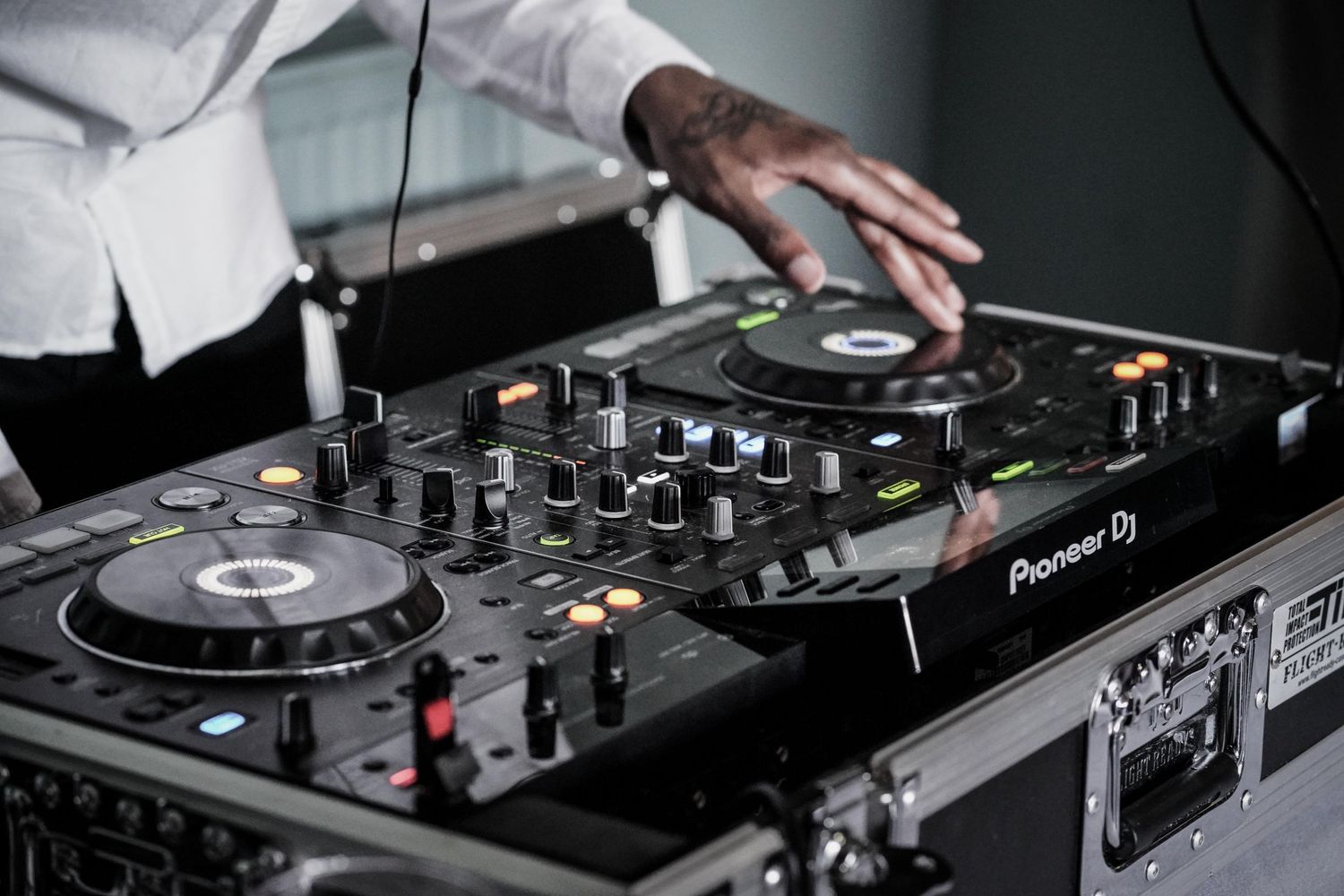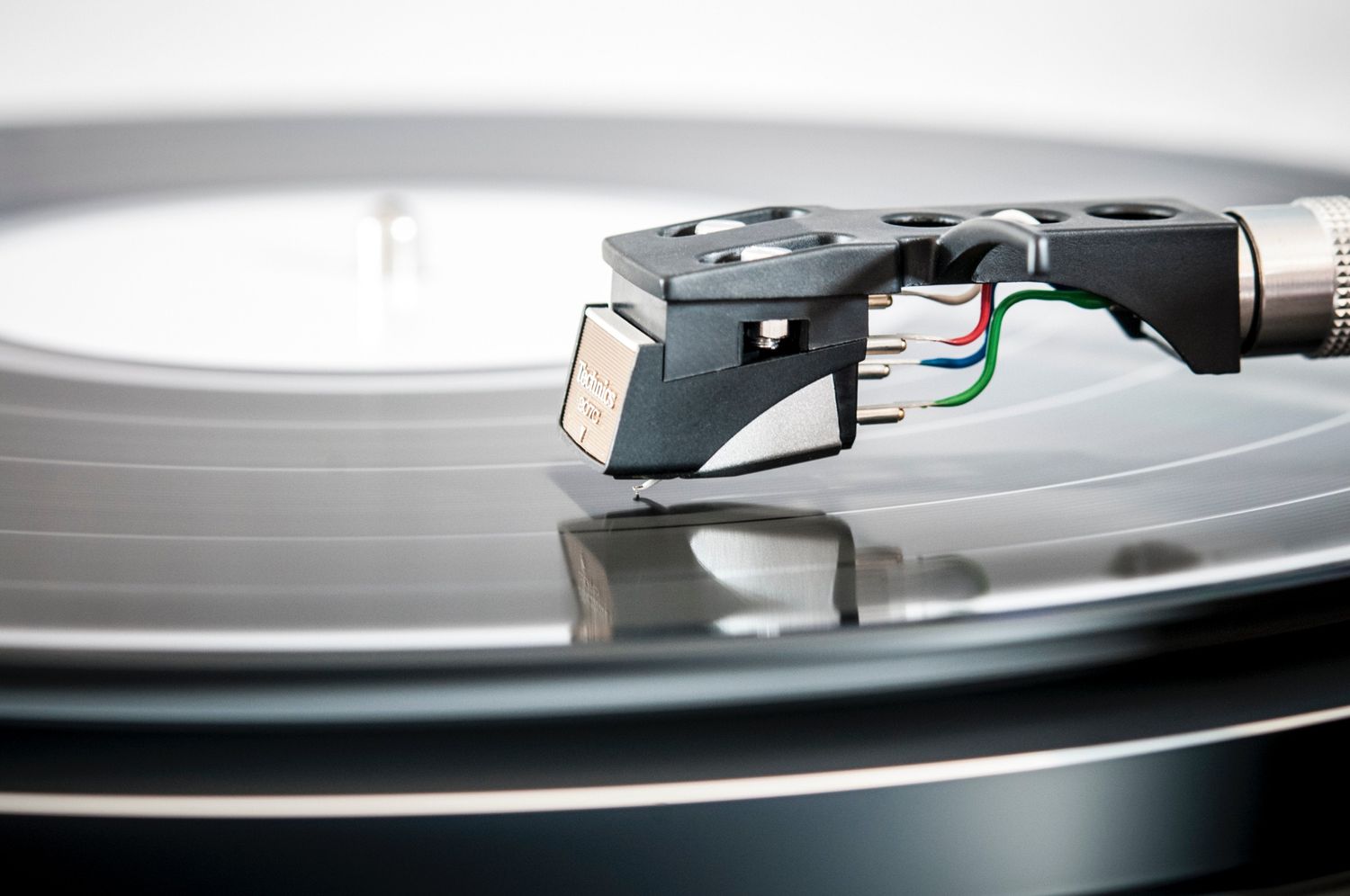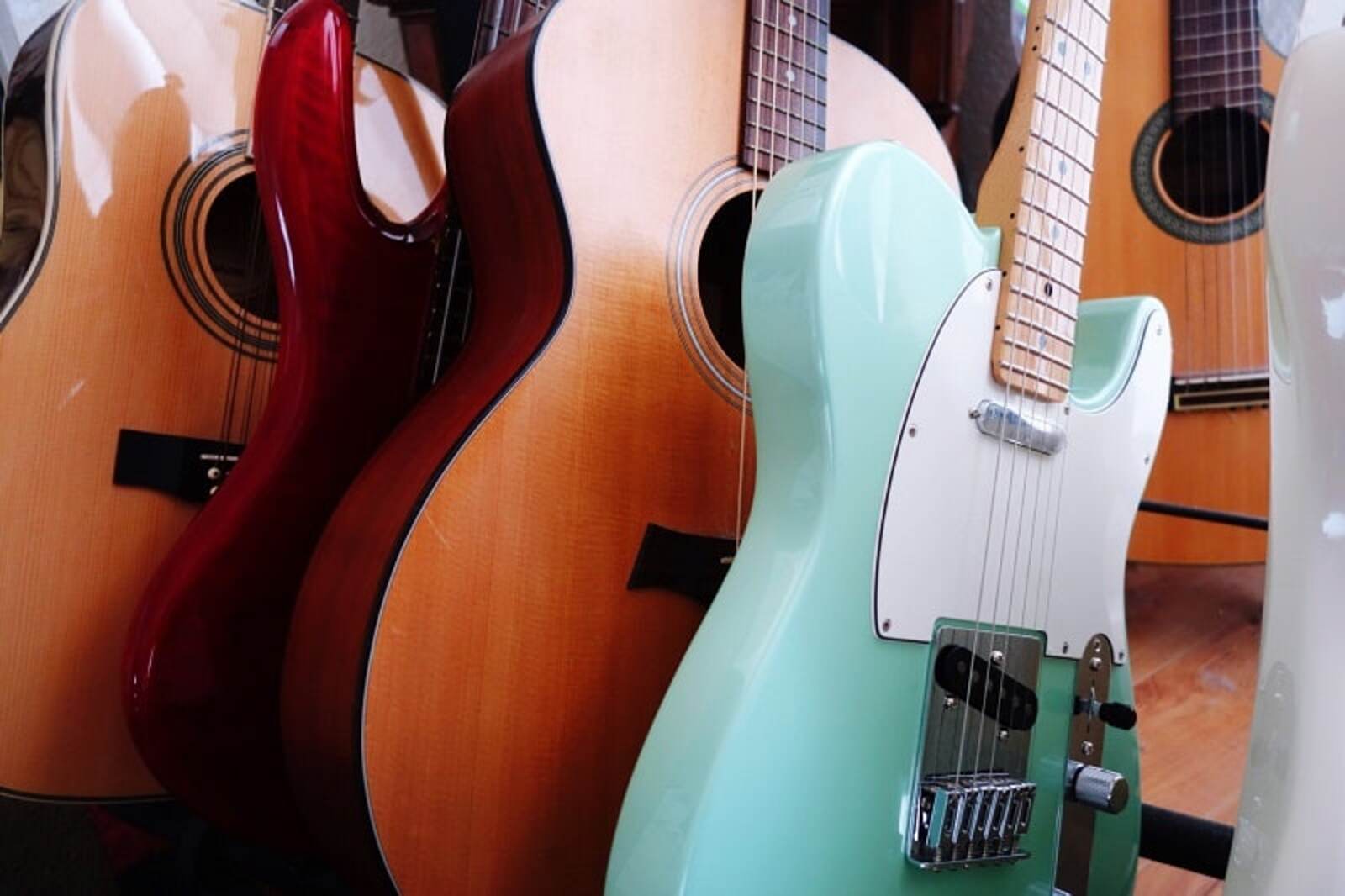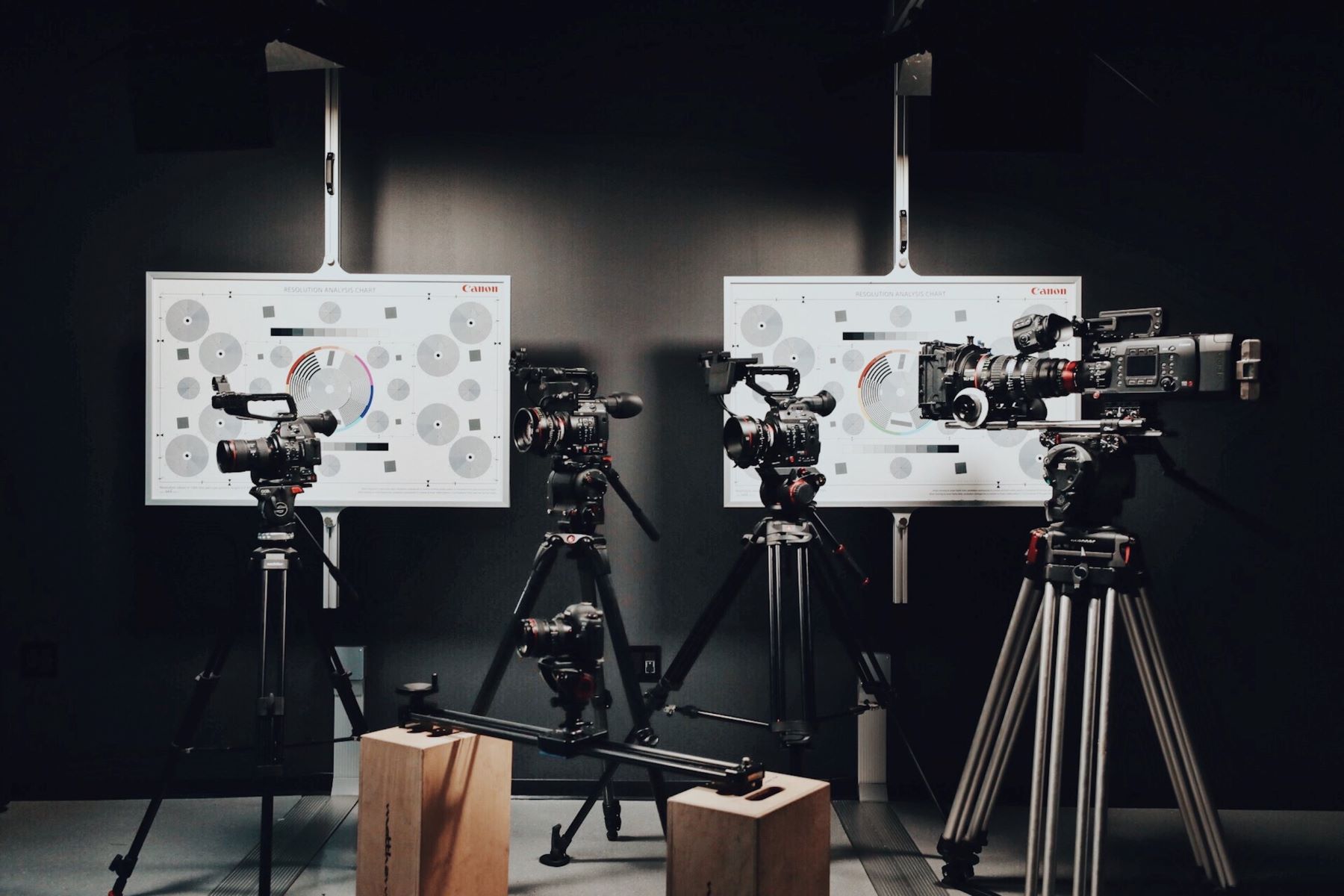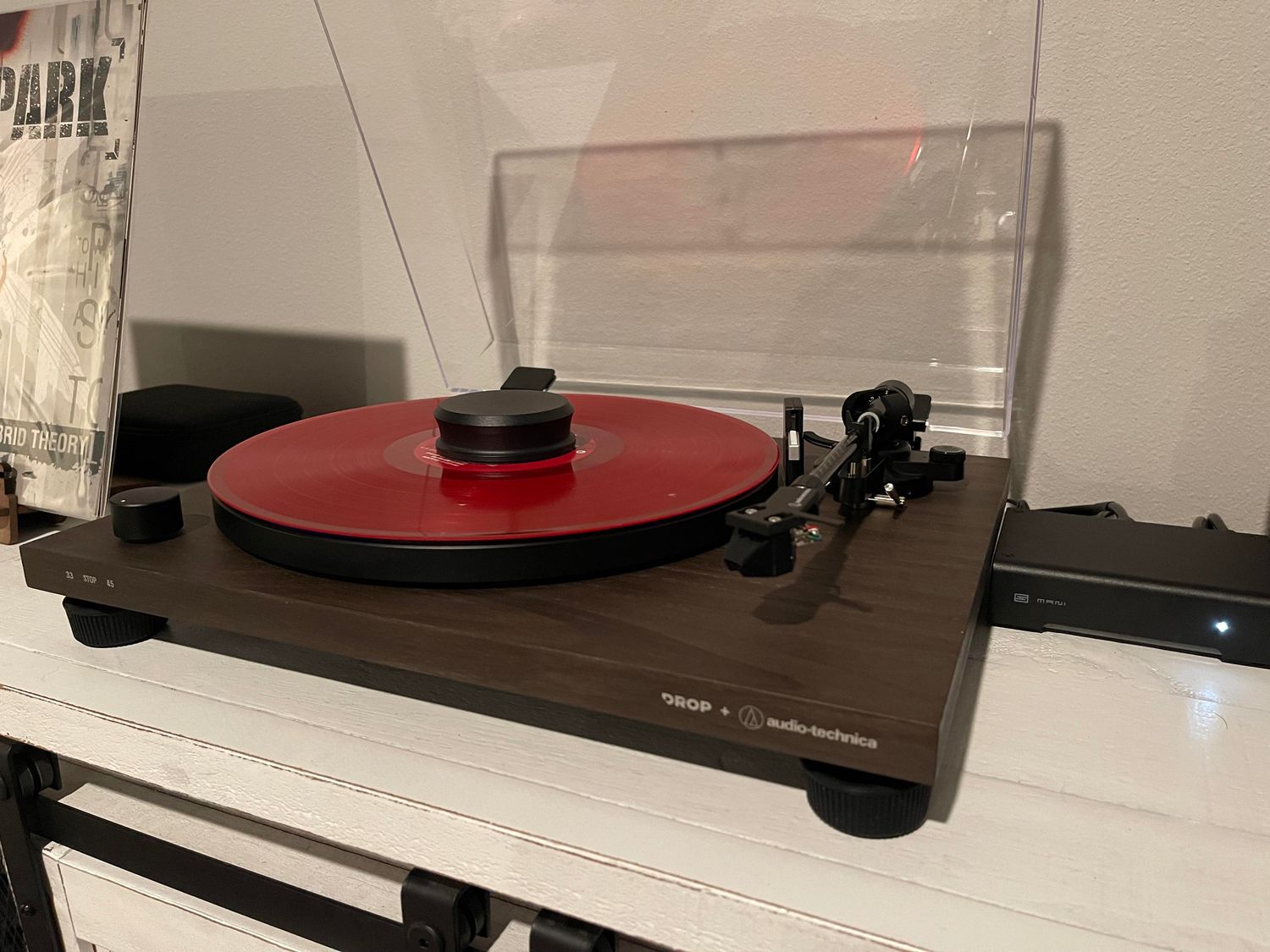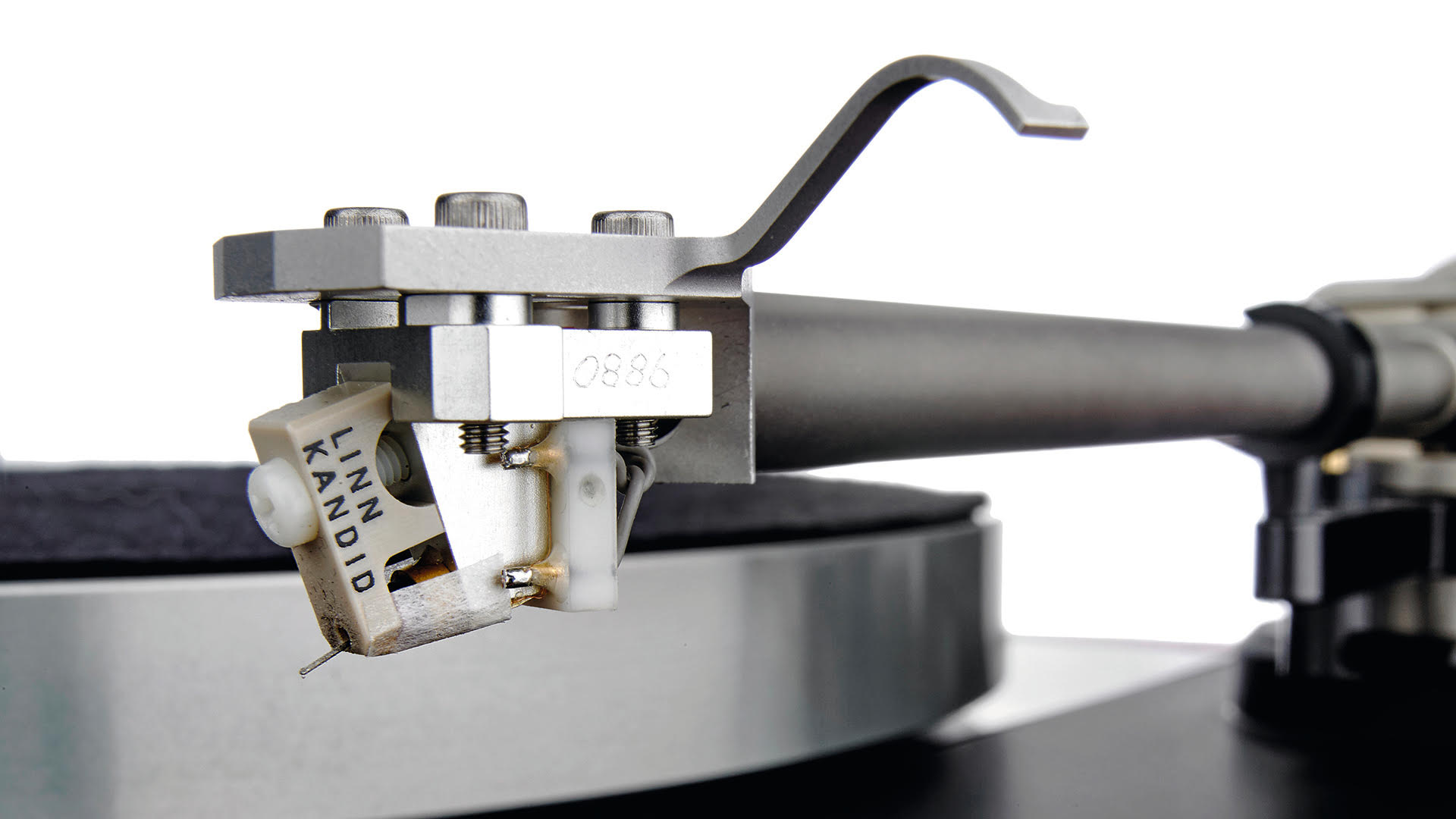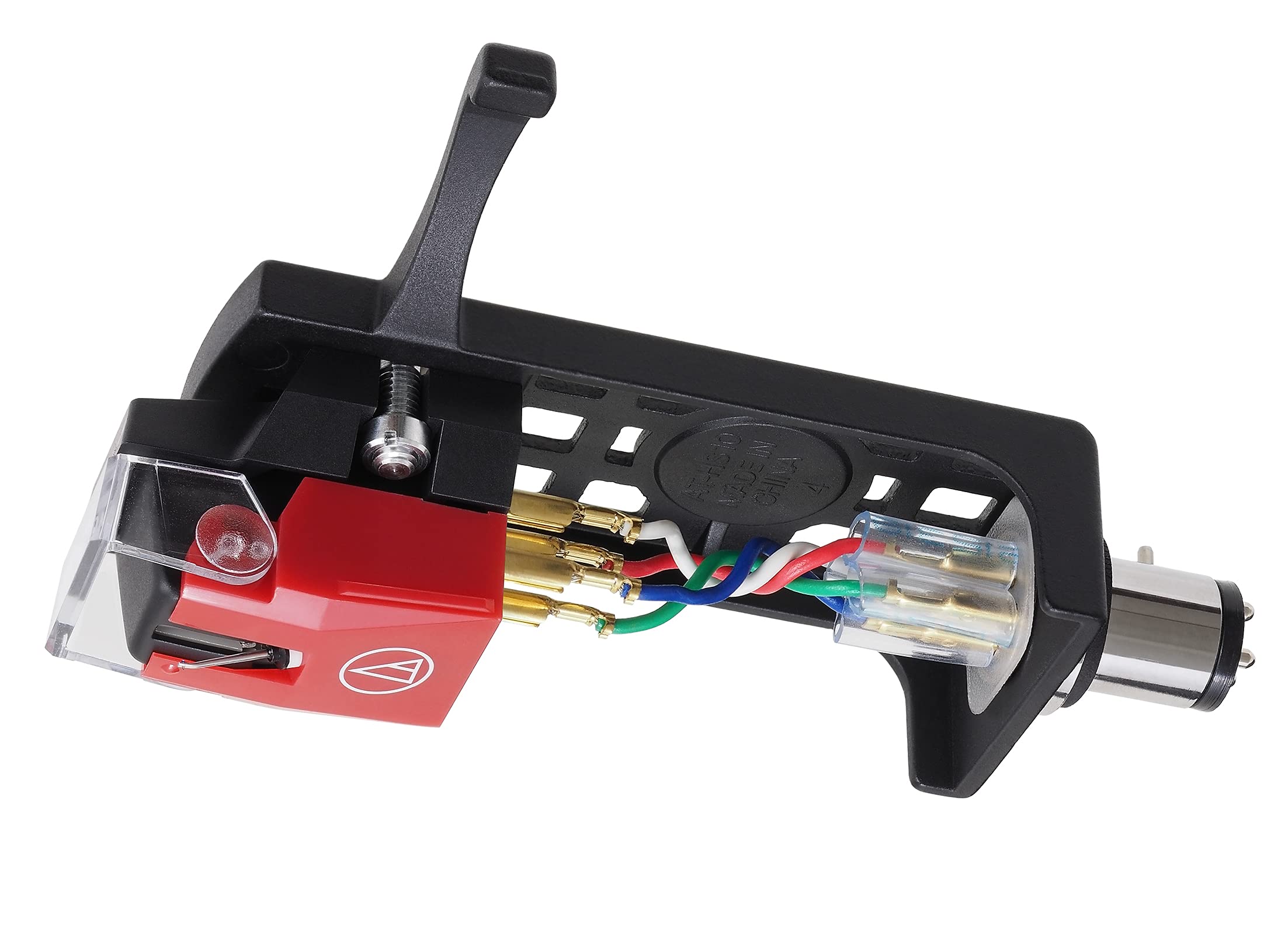Home>Devices & Equipment>Turntable>What Kind Of Plastic Is A Turntable Lid


Turntable
What Kind Of Plastic Is A Turntable Lid
Modified: January 22, 2024
Discover the type of plastic used in turntable lids and gain insights into the benefits and features of various materials. Learn about the durability and versatility of turntable lids made with different types of plastic.
(Many of the links in this article redirect to a specific reviewed product. Your purchase of these products through affiliate links helps to generate commission for AudioLover.com, at no extra cost. Learn more)
Table of Contents
Introduction
Turntables, also known as record players, have been a timeless staple in the world of music for decades. With their ability to bring the rich, warm sound of vinyl records to life, they have retained a dedicated following of audiophiles and music lovers. But it’s not just the sound quality that makes turntables so captivating; their design elements also play a significant role in their appeal.
One key component of a turntable is the lid, which serves as a protective cover for the delicate turntable platter and stylus. While it may seem like a simple piece of plastic, the choice of materials for turntable lids is crucial for both functionality and aesthetics.
In this article, we’ll delve into the world of turntable lids and explore the different types of plastics commonly used in their construction. From polyethylene to acrylic to polycarbonate and polypropylene, we’ll uncover how each material affects the performance and appearance of a turntable lid. By understanding the characteristics and benefits of these plastics, you’ll be better equipped to choose the right lid for your turntable.
So, whether you’re a vinyl enthusiast looking to upgrade your turntable or simply curious about the world of plastics, let’s dive in and discover what kind of plastic is used in turntable lids.
Understanding Turntable Lids
Turntable lids, also referred to as dust covers, serve several important functions in the world of vinyl record players. They are designed to protect the sensitive components of a turntable, such as the platter and tonearm, from dust, dirt, and other potential hazards. Additionally, turntable lids help reduce vibrations and keep the overall system stable, contributing to better sound quality.
Moreover, turntable lids are crucial for preserving the longevity and performance of the turntable itself. By shielding the delicate parts from external elements, lids prevent damage and maintain the overall condition of the turntable, ensuring that it operates optimally for years to come.
From a visual standpoint, turntable lids also contribute to the overall aesthetics of the record player. The sleek and transparent design of many lids adds a touch of elegance and sophistication to the turntable, making it a focal point in any music-loving household.
It’s worth mentioning that not all turntables come with a lid. Some models are designed to be more minimalist and omit the lid altogether, offering a different aesthetic and operating experience. However, for those who prioritize protection and convenience, a lid is an essential accessory.
Now that we have a solid understanding of the importance of turntable lids, let’s explore the different types of plastics commonly used in their construction.
Types of Plastic Used in Turntable Lids
When it comes to turntable lids, several types of plastics are commonly used in their construction. Each type has its own unique characteristics, strengths, and weaknesses. Let’s take a closer look at four of the most popular plastics used in turntable lids:
- Polyethylene (PE): Polyethylene is a versatile plastic known for its durability and resistance to water, chemicals, and impact. It is commonly used in turntable lids due to its strength and affordability. Polyethylene lids are lightweight, easy to clean, and offer good protection against dust and debris. However, they may not have the optical clarity or high-end aesthetic of other plastic types.
- Acrylic: Acrylic is a transparent plastic that provides excellent optical clarity, making it a popular choice for turntable lids. It is lightweight, scratch-resistant, and offers good protection against dust and scratches. Acrylic lids can enhance the aesthetic appeal of a turntable, giving it a modern and sleek look. However, they may be more prone to cracking compared to other plastics.
- Polycarbonate (PC): Polycarbonate is a strong and impact-resistant plastic known for its clarity and durability. It offers excellent protection against dust, scratches, and accidental bumps. Polycarbonate lids are often used in high-end turntables due to their optical clarity and robustness. However, they can be more expensive compared to other plastic options.
- Polypropylene (PP): Polypropylene is a lightweight and flexible plastic with good chemical resistance. It is commonly used in turntable lids due to its affordability and ease of manufacturing. Polypropylene lids offer decent protection against dust and debris, but they may not have the same level of optical clarity or durability as other plastics.
These four types of plastics are widely used in the construction of turntable lids, and each brings its own set of benefits and considerations. The choice of plastic depends on factors such as budget, aesthetic preferences, and desired level of protection.
Next, let’s compare these different plastic types to understand their strengths and weaknesses in more detail.
Polyethylene (PE)
Polyethylene (PE) is a commonly used plastic in the construction of turntable lids. It is a versatile material known for its durability, impact resistance, and affordability. PE lids offer several advantages that make them a popular choice in the market.
Firstly, polyethylene lids are lightweight, which makes them easy to handle and maneuver. This is especially useful when you need to lift the lid on and off the turntable while changing records or accessing the stylus. The lightweight nature of PE also means that it exerts minimal pressure on the turntable components, reducing the risk of damage or vibration interference.
Another key advantage of PE is its resistance to water and chemicals. This makes the lid easy to clean and maintain, as you can simply wipe it down with a damp cloth or use mild cleaning solutions without worrying about damage. Additionally, the impermeability of polyethylene ensures that your turntable remains protected from any accidental spills or splashes.
PE lids also offer good protection against dust and debris, thanks to their durability and tight fit on the turntable. By keeping these contaminants at bay, the lid helps to preserve the performance of your turntable, ensuring a clean and uninterrupted listening experience.
However, it’s important to note that polyethylene lids may not have the same level of optical clarity as other plastics, such as acrylic or polycarbonate. While they do provide visibility for the turntable, the clarity may not be as crisp or high-end. This is a trade-off to consider if you prioritize aesthetics and visual appeal.
In terms of cost, polyethylene lids are generally more affordable than their acrylic or polycarbonate counterparts. This makes them a budget-friendly option for those who want a functional lid without breaking the bank.
In summary, polyethylene lids offer durability, lightweight design, chemical resistance, and good protection against dust and debris. While they might not offer the same level of optical clarity as other plastics, they are an excellent choice for those seeking an affordable and reliable lid for their turntable.
Acrylic
Acrylic is a popular choice for turntable lids due to its excellent optical clarity and sleek appearance. It is a transparent plastic that offers a range of benefits for both functionality and aesthetics.
One of the key advantages of acrylic lids is their optical clarity. Acrylic is known for its ability to provide a crystal-clear view of the turntable underneath. This allows you to showcase your vinyl collection and the intricate workings of your turntable with utmost clarity.
Another benefit of acrylic is its lightweight nature. This makes acrylic lids easy to handle and lift, ensuring a seamless user experience when accessing your turntable. The lightweight design also minimizes any potential strain on the turntable components, reducing the risk of damage or interference with sound quality.
Acrylic lids are also scratch-resistant, offering protection against minor scuffs and abrasions. This helps to maintain the pristine appearance of the lid over time. Additionally, acrylic is more resistant to cracking compared to some other plastic options, providing durability and longevity to your turntable lid.
In terms of aesthetics, acrylic lids can enhance the overall look of your turntable. The transparent nature of acrylic adds a modern and sophisticated touch to the design, making the turntable a standout piece in your music setup. Acrylic lids are often favored by those who appreciate a sleek and stylish appearance.
However, it’s worth noting that acrylic lids may be more prone to cracking compared to other plastics, especially under significant impacts. Care needs to be taken when handling and storing acrylic lids to prevent any accidental damage. Additionally, acrylic lids can be more expensive compared to other plastic options, making them a consideration for those with a higher budget.
In summary, acrylic lids offer excellent optical clarity, lightweight design, scratch-resistance, and a modern aesthetic. While they may be more susceptible to cracking and come with a higher price tag, the advantages of acrylic make it a preferred choice for those seeking a visually appealing and reliable turntable lid.
Polycarbonate (PC)
Polycarbonate (PC) is a strong and impact-resistant plastic that is commonly used in turntable lid construction. It offers a range of benefits that make it a popular choice among audio enthusiasts.
One of the primary advantages of polycarbonate lids is their exceptional clarity. Polycarbonate is known for its high optical transparency, allowing for a clear and unobstructed view of the turntable and vinyl record underneath. This enhances the visual experience of using a turntable, showcasing the beauty of the record playing process.
In addition to optical clarity, polycarbonate is also highly durable. It has excellent impact resistance, making it less likely to crack or shatter under pressure. This durability ensures that the turntable lid remains intact and provides reliable protection for the turntable components against external elements such as dust and debris.
Polycarbonate lids also offer good resistance to scratches and abrasions. This helps to maintain the pristine appearance of the lid over time, ensuring it continues to enhance the overall aesthetics of the turntable.
Another advantage of polycarbonate is its excellent heat resistance. It can withstand high temperatures without warping or deforming, which is particularly important when using turntables near heat sources such as amplifiers or speakers.
While polycarbonate lids provide exceptional benefits, they are typically more expensive compared to other plastic options such as polyethylene or polypropylene. The higher cost is due to the superior clarity, impact resistance, and overall quality of polycarbonate.
In summary, polycarbonate lids offer outstanding optical clarity, durability, scratch resistance, and heat resistance. With their ability to provide a clear view of the turntable while offering robust protection, polycarbonate lids are a popular choice among those seeking both functionality and visual appeal in their turntable setup.
Polypropylene (PP)
Polypropylene (PP) is a lightweight and flexible plastic commonly used in the construction of turntable lids. While it may not offer the same level of optical clarity as acrylic or polycarbonate, polypropylene lids have their own set of advantages that make them a popular choice in the market.
One of the key benefits of polypropylene lids is their affordability. Polypropylene is a cost-effective material, making it an excellent option for those on a budget or looking for a more economical choice. This allows music enthusiasts to protect their turntable components without compromising their financial investment.
Despite being lightweight, polypropylene lids offer decent protection against dust and debris. Their flexible nature allows for a secure fit on the turntable, preventing unwanted contaminants from settling on the sensitive components. While they may not provide the same level of dust resistance as more rigid plastics, polypropylene lids offer adequate protection for everyday use.
Polypropylene is also known for its chemical resistance, making the lid easy to clean and maintain. It can withstand mild cleaning solutions without any risk of damage, allowing you to keep your turntable in pristine condition. The ease of cleaning is particularly beneficial for those who want to maintain a hygienic environment for their vinyl records.
However, it’s important to note that polypropylene lids may not have the same level of optical clarity as other plastics. While still providing visibility for the turntable underneath, the clarity may not be as crisp or high-end. This trade-off is something to consider if the visual appeal is a top priority for you.
In summary, polypropylene lids offer affordability, lightweight design, flexibility, and decent protection against dust and debris. While they may not provide the same level of optical clarity as other plastics, polypropylene lids are an excellent choice for those seeking cost-effective and functional lid options for their turntable.
Comparing Different Plastic Types
When it comes to choosing the right plastic for a turntable lid, it’s essential to consider the specific characteristics and benefits of each material. Let’s take a closer look at how the different plastic types stack up against each other.
Polyethylene (PE) lids offer durability, affordability, and resistance to water and chemicals. They are lightweight and easy to clean, making them a practical choice for everyday use. However, they may not provide the same level of optical clarity as other plastics and may lack the high-end aesthetic some audiophiles seek.
Acrylic lids excel in optical clarity, providing a crystal-clear view of the turntable and enhancing its visual appeal. They are lightweight, scratch-resistant, and offer a modern aesthetic. However, they can be more prone to cracking and come with a higher price tag compared to other plastic options.
Polycarbonate (PC) lids offer exceptional optical clarity, durability, and impact resistance. They provide a clear view of the turntable while protecting its components from dust and debris. However, they can be more expensive compared to other plastics.
Polypropylene (PP) lids are affordable, lightweight, and flexible. They offer decent protection against dust and debris and are easy to clean. However, they may not have the same level of optical clarity as other plastics and offer a more budget-friendly option.
When comparing these plastic types, factors such as budget, desired level of protection, optical clarity, and aesthetic preferences come into play. Polyethylene and polypropylene lids are more budget-friendly options, while acrylic and polycarbonate lids deliver superior optical clarity and aesthetic appeal.
Ultimately, the choice of plastic depends on personal preferences and the specific requirements of the turntable setup. Some may prefer the sleek and modern look of an acrylic lid, while others prioritize durability and impact resistance offered by polycarbonate. It’s essential to evaluate the pros and cons of each plastic type to select the one that best suits your needs.
By understanding the characteristics and benefits of different plastic types, you can make an informed decision when choosing a turntable lid that will provide both functionality and enhance your overall listening experience.
Factors Influencing the Choice of Plastic
When selecting the plastic for a turntable lid, there are several factors to consider that can influence the decision-making process. Let’s explore these factors to help you make an informed choice.
Cost: Budget is often a significant factor when choosing a plastic type for a turntable lid. Some plastics, like polyethylene or polypropylene, are more affordable compared to acrylic or polycarbonate. Consider your budget and weigh it against the desired qualities and benefits of different plastics.
Desired Level of Protection: The level of protection you require for your turntable components is another crucial aspect. Consider the environment in which your turntable will be placed – if it’s prone to dust or debris, you may want to opt for a lid that offers superior protection, such as polycarbonate or acrylic.
Optical Clarity: If having a clear and unobstructed view of your turntable and vinyl collection is important to you, then plastics like acrylic or polycarbonate, known for their excellent optical clarity, might be the preferred choice.
Aesthetic Preference: The overall aesthetic appeal of the turntable setup is an essential consideration for many music enthusiasts. Some may prefer the modern and sleek look of acrylic, while others might prioritize a more budget-friendly and functional option like polyethylene or polypropylene.
Durability: Depending on how frequently you use your turntable and the level of protection needed, the durability of the plastic is an important factor to consider. Polycarbonate is known for its excellent impact resistance, making it a robust choice for those who want long-lasting protection.
Cleaning and Maintenance: Ease of cleaning and maintenance can also play a role in the choice of plastic. Polyethylene and polypropylene lids are generally easier to clean due to their resistance to water and chemicals, while acrylic and polycarbonate may require more delicate cleaning procedures to maintain their clarity.
Heat Resistance: If your turntable will be positioned near heat sources such as amplifiers or speakers that generate high temperatures, it’s important to consider the heat resistance of the plastic. Polycarbonate, for example, is known for its ability to withstand high temperatures without warping or deforming.
By considering these influencing factors, you can make a well-informed decision about the plastic type that best meets your specific needs and preferences for your turntable lid.
Conclusion
Choosing the right plastic for a turntable lid is a decision that involves considering several factors, including cost, desired level of protection, optical clarity, aesthetic preferences, durability, cleaning and maintenance needs, and heat resistance. Understanding the characteristics and benefits of different plastic types helps to make an informed choice that enhances both the functionality and visual appeal of your turntable setup.
Polyethylene lids offer durability, affordability, and resistance to water and chemicals, making them a practical choice for everyday use. Acrylic lids excel in optical clarity and modern aesthetics, providing a crystal-clear view of the turntable. Polycarbonate lids offer exceptional optical clarity and durability, ensuring reliable protection against dust and debris. Polypropylene lids are affordable, lightweight, and flexible, although they may not provide the same level of optical clarity.
Ultimately, the decision depends on individual preferences and requirements. Budget, desired level of protection, optical clarity, aesthetic appeal, and other factors specific to your turntable setup play a significant role in guiding your choice. By carefully considering these factors, you can select the plastic type that best suits your needs, ensuring both functionality and an aesthetically pleasing experience.
Whether you opt for the affordability and durability of polyethylene, the optical clarity of acrylic or polycarbonate, or the flexibility of polypropylene, a well-chosen turntable lid will not only protect your valuable equipment but also enhance your overall listening experience. So, take your time, weigh your options, and select the plastic type that aligns with your personal preferences and requirements as you embark on a journey of enjoying the magic of vinyl records.



